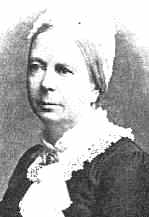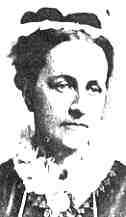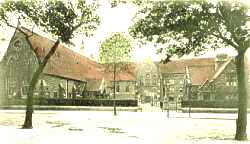
Frances Mary Buss
Courtesy the North London
Collegiate School

Dorothea Beale
Courtesy the Cheltenham
Ladies' College
This movement began in 1843 when the Governesses' Benevolent Institution started a system of examinations and certificates for governesses. This in turn led to the establishment of Queen's College, London in 1848. It was the first College for Women and it was raised above the ordinary level of girls' secondary schools by its wide range of subjects which included English Literature and Language, French, German, Italian, Latin, Mathematics, Geography, Geology, History, Natural Philosophy, Theology, Botany, Chemistry, Music and Drawing.
Its major contribution to the reform of girls' secondary and university education was in educating most of the future pioneers in this field, including Miss Buss and Miss Beale, headmistresses respectively of the North London Collegiate School (1859) and of Cheltenham Ladies' College (1858). A significant change took place in late nineteenth-century girls' secondary and higher education with the rise of large public schools for girls together with a decline in small private family-type schools for young ladies. These two women played a key role in bringing about this revolution.
 Frances Mary Buss Courtesy the North London Collegiate School |
 Dorothea Beale Courtesy the Cheltenham Ladies' College |
They had very different personalities: Miss Buss's temperament was, as she put it, 'gunpowdery' whereas Miss Beale was aloof and reserved with a strong sense of her own dignity. As headmistresses, neither woman could see any reason for making fundamental distinctions between schooling for girls and boys. By 1869 Dorothea Beale had concluded:
| The old rubbish about masculine and feminine studies is beginning to be treated as it deserves. It cannot be seriously maintained that those studies which tend to make a man nobler or better have the opposite effect on a woman. Quoted in Felicity Hunt (ed.), Lessons for life, Oxford, 1987, p. 7. |
Yet as pioneers who wanted to reform girls' education, both headmistesses knew that they must move in conformity with accepted codes of behaviour and thus minimise the risk of their pupils being labelled as 'mannish' or 'unsexed'. So while encouraging high academic standards for girls they also insisted on ladylike behaviour. Both women also had difficulties with male-dominated committees or governing bodies who were slow to give women any authority. Gradually, with great determination and patience, they succeeded in raising the status of headmistresses of girls' public schools. In a society where women were considered the inferior sex and defined primarily as wives and mothers, Miss Buss and Miss Beale, as efficient authoritative headmistresses, paved the way for the idea that single middle-class women could earn a living as paid professionals. The price they had to pay in personal terms was being caricatured in the following verse:
|
Miss Buss and Miss Beal |
 Cheltenham Ladies' College Early twentieth century |